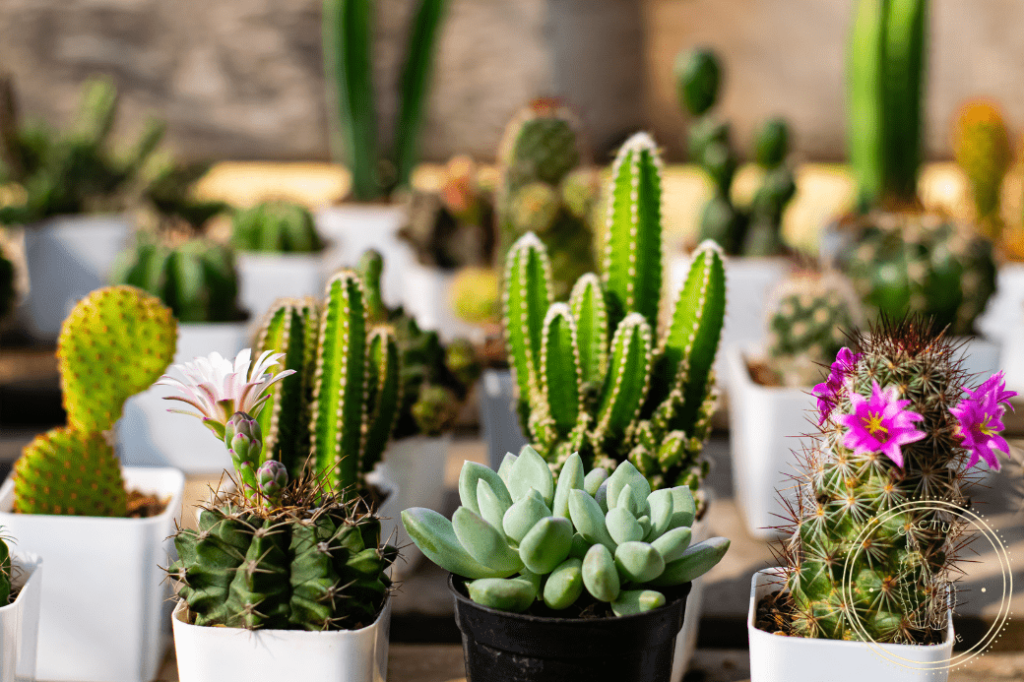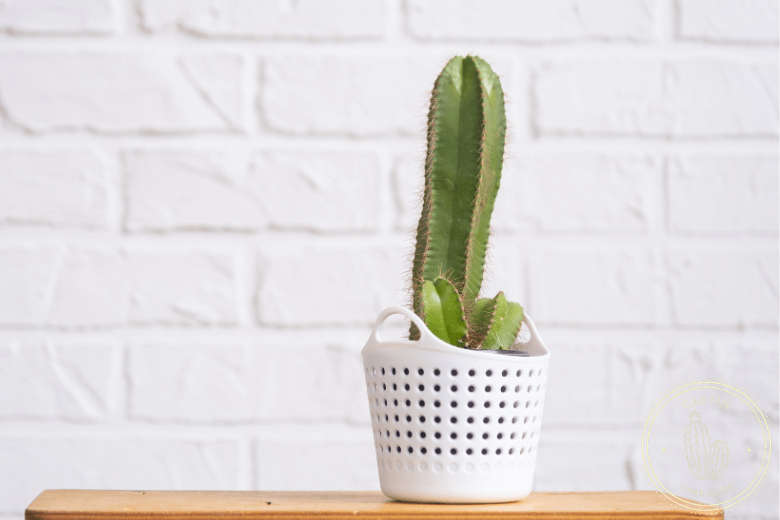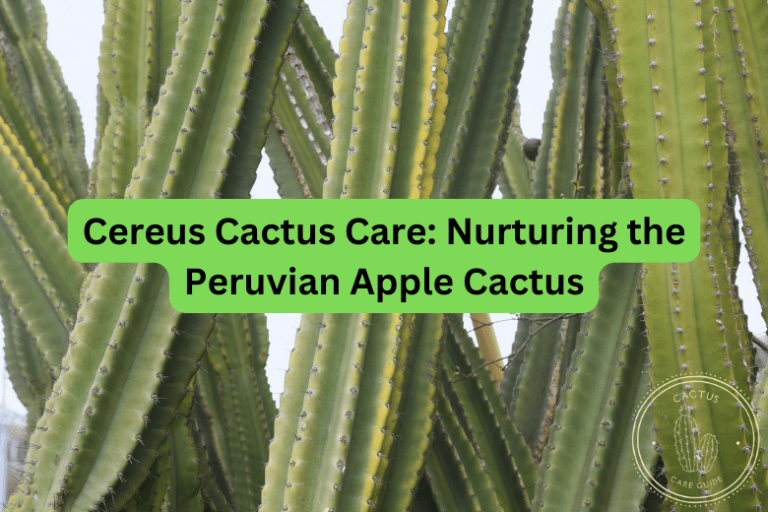Preventing Cactus Sunburn: Protect Your Prickly Plants
Cacti are renowned for their resilience and ability to thrive in arid environments, but even these hardy plants can fall victim to a common issue known as “cactus sunburn”.
While cacti are well-adapted to intense sunlight, prolonged exposure to harsh sunlight can cause sunburn, leading to unsightly damage and potential health issues for your beloved prickly companions. In this article, we will explore the causes, symptoms, and preventive measures to help you keep your cacti thriving under the sun.

Causes of Cactus Sunburn
Understanding the causes of cactus sunburn is essential for preventing and addressing this common issue. Recognizing causes empowers you to protect your cacti from sunburn and ensure their optimal health.
Intense Sunlight
Cacti are native to desert regions such as the Arizona Desert in South America, where they are exposed to intense sunlight. However, sudden changes in sunlight intensity, such as moving a cactus from indoors to direct sunlight, can cause a sunburned appearance.
Lack of Acclimatization
The acclimatization process is crucial for the well-being of your cactus plant. Sudden shifts from shaded areas to full sun can leave the plant vulnerable to sunburn. Gradually introducing it to increased light levels allows the cactus to adjust its metabolic processes and adapt to changing conditions.
Water Droplets
While watering is essential for cacti, the timing and method matter. Water droplets left on the cactus surface can act as magnifying glasses, intensifying sunlight and increasing the risk of sunburn. Besides, early morning watering, ensuring that water doesn’t accumulate on the plant’s surface before the full sun is crucial for preventing this phenomenon.
Symptoms of Cactus Sunburn
Identifying the symptoms of sunburned cactus is crucial for prompt intervention and recovery. Understanding symptoms enables effective care tailored to your sun-stressed cactus.
Discoloration
Sunburned cactus plant often exhibit discoloration, appearing brown or bright yellow. This is a sign that the plant’s tissues have been damaged by too much sunlight.

Blisters or Lesions
Severe cases of sunburn on cacti can manifest as the formation of blisters or lesions on the surface of the plant. These areas may become dry and, if left untreated, can eventually lead to tissue death. Identifying blisters or lesions early on allows for targeted intervention, preventing further deterioration of the affected areas.
Reduced Growth
One of the less obvious but impactful symptoms of sunburned cactus is a reduction in growth. When a cactus is sun-stressed, it redirects its energy resources towards healing the damaged tissues, slowing down or stunting overall growth. This redirection of energy can affect the plant’s development, making it crucial to address sunburn promptly to restore normal growth patterns.
Preventive Measures
Preventing sunburn in cacti involves proactive measures to ensure they thrive in their environment.
Gradual Acclimatization
When introducing a cactus to a new location, especially one with more sunlight, do so gradually. Begin by placing the cactus in a partially shaded area or under artificial lighting. This gradual introduction allows the plant to adjust to increased light levels without the risk of sudden sunburn.
Over several days or weeks, gradually increase the cactus’s exposure to direct sunlight. This methodical approach ensures that the plant has sufficient time to acclimate, minimizing the potential for sunburn.
Watering Practices
Water your cactus early in the day to allow any moisture on its surface to evaporate before the sun reaches its peak. This reduces the risk of water droplets acting as magnifying glasses, which can intensify sunlight and contribute to sunburn.
Minimize the use of overhead watering methods, such as sprinklers, as this can leave water on the cactus surface. Instead, opt for targeted watering at the base of the cactus plant to ensure that water doesn’t accumulate on the pads or stems.

Provide Shade
If your cacti plants are in containers or movable, consider providing temporary shade during the blazing heat. This can be achieved using shade cloth, umbrellas, or by placing the cactus family in a location with filtered sunlight.
Monitor Sunlight Conditions
Be mindful of the sun exposure in your garden or home. Ensure that your cacti plants are placed in locations where they receive the appropriate amount of sunlight for their species.

Treatment Methods for Sunburned Cactus
Cactuses, like any other plants, can suffer from sunburn when exposed to excessive sunlight. Therefore, it’s crucial to take swift action for its recovery. These measures will help your sunburn cactus bounce back and thrive once more.
Move to Shade
The first step in healing a sunburned cactus is to immediately move it to a shaded area. This protects the plant from further sun exposure and allows it to recover without additional environmental stress.
Trim Damaged Areas
When trimming sunburn-damaged areas, precision is key. Ensure that you use clean, sharp pruning shears and cut just above healthy tissue. This not only promotes new growth but also prevents the spread of potential infections. Take the time to assess the extent of damage before making careful incisions.
Provide Proper Nutrients
As your cactus begins the recovery process, supporting it with the right nutrients is beneficial. Consider using a balanced, diluted cactus fertilizer to provide essential elements for growth. Following recommended guidelines for fertilization prevents overfeeding, supporting a healthy recovery without putting additional stress on the plant.
Monitor for Pests or Infections
Sunburned areas on a cactus can become more susceptible to pests or infections. Regular monitoring is crucial during the recovery phase. Promptly address any signs of pests or diseases to prevent them from spreading and causing further harm to the weakened plant.
Conclusion
Cactus sunburn is a common issue that can affect the plant’s health and the appearance of your prized succulents. By understanding the causes, recognizing symptoms, and implementing preventive measures, you can help your cactus plants withstand direct sunlight and continue to be resilient symbols of endurance and beauty in your garden or home.
Your cacti’s ability to recover is remarkable, and with proper attention, they can continue to thrive as symbols of endurance and beauty in your garden or home. By following these guidelines, you ensure that your prickly companions remain vibrant and resilient, even under the intense gaze of the sun.
You might also like:
? How to treat black spot on cactus plants
? How to get rid of cactus bugs
? How to get water out of a cactus

Frequently Asked Questions
Will a sunburned cactus recover?
Yes, a sunburned cactus can recover. Move cacti plants to a shaded area, allow time for healing, trim damaged areas, adjust watering, and gradually reintroduce them to sunlight. With proper care, most cacti can bounce back from sunburn.
Why do cactus get sunburned?
Cacti can get sunburned when exposed to sudden intense heat without proper acclimatization. Factors such as abrupt changes in light conditions, lack of shade, temperatures drop, and water droplets on the plant’s surface magnifying sunlight contribute to turning into sunburned cacti.
Is too much sun bad for cactus?
Yes, too much sun can be harmful to cacti. Prolonged light exposure without acclimatization can lead to sunburned cactus, causing discoloration, blisters, and growth issues. Providing appropriate shade and gradual introduction to direct sunlight helps prevent sun damage.
Can it be too hot for cactus?
Yes, it can be too hot for cacti, especially if they are suddenly exposed to extreme temperatures without adequate protection. Hot sun can lead to dehydration, sunburn, and stress on the plant. Providing shade during intense heat and ensuring proper watering can help mitigate these issues.
Do cactuses like morning or afternoon sun?
Cacti generally prefer the morning sun to the afternoon sun. Morning sunlight is typically less intense and allows cacti to receive the light they need without the risk of sun scorch. Providing morning sun and partial shade during the hottest part of the afternoon is often ideal for their well-being.
Should I cut off dead cactus?
Yes, you should cut off dead or damaged parts of a cactus using clean, sterile tools. Trimming away dead sections helps the plant focus its energy on healthy growth and prevents the spread of disease. Ensure the cut is made above any signs of rot or damage, leaving the healthy tissue intact.
Where is the best place to put a cacti?
The best place to put a cactus is in a location with plenty of bright indirect light. Cacti thrive in well-lit areas, preferably with morning sun and some protection from intense afternoon direct sun. Ensure well-draining soil, and be mindful of temperature and humidity conditions suitable for many cacti species.
Can I put my cactus outside in the sun?
Yes, you can put your cactus outside in the sun, but it’s important to acclimate it gradually. Start with partial sun exposure and gradually increase the time it spends in direct sunlight to prevent sunburn. Ensure the outdoor location provides well-draining soil and protection from extreme conditions like intense afternoon sun or cool weather.
How do you prevent sunburn on cactus?
To prevent having sunburned cactus, acclimate it gradually to sunlight, starting with partial exposure. Provide shade during the hottest part of the day, water early to avoid moisture-magnifying sunlight, and ensure well-draining soil with essential nutrients. Monitoring sunlight conditions and adjusting placement accordingly prevents having sunburnt cactus.

Greetings, dear succulent lovers! I’m Jennifer West and I’m happy to share with you practical tips and guides on growing and caring for succulents, as well as all the magical facts about these unique plants. Grateful to have you on this green journey with me! Check out more about our team here.







